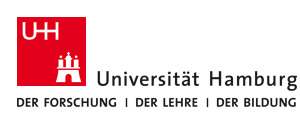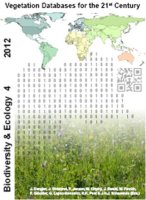Biodiversity & Ecology
Short Database Report Open Access
China Forest-Steppe Ecotone Database
Keywords: desert steppe; forest-steppe ecotone; Inner Mongolia; typical steppe.
 English
English
Abstract: The China Forest Steppe Ecotone Database (GIVD ID AS-CN-001) contains relevés of the forest-steppe ecotone, typical steppe and desert steppe in central part of Inner Mongolia, China as well as of the Zamin Ude region in Mongolia. Relevés of the forest-steppe ecotone were recorded during the 1990s. The communities in the forest-steppe ecotone are classified in a phytocoenological way. 12 major types of forest, shrubland, meadow, fen, open woodland and steppe are differentiated and described according to 133 relevés. Due to limited releves, the plant communities are named by their dominant species: 1. Quercus mongolica-woodland; 2. Betula platyphylla-woodland; 3. Betula dahurica-woodland; 4. Populus davidiana-woodland; 5. Picea meyeri-woodland; 6. Pinus tabulaeformis-woodland; 7. Ostryopsis davidiana-shrubland; 8. Polygonum viviparum-meadow; 9. Ranunculus japonica-fen; 10. Stipa baicalensis-steppe; 11. Leymus chinensis-steppe; 12. Ulmus pumila-open woodland. Other plant community types with less than 5 releves are Larix principis-ruprechtii-woodland, Pinus - Betula fruticosa-scrub, Stipa krylovii-steppe, Filifolium sibiricum-steppe and Thymus serphyllum-steppe. During the 2000s, we extended our survey further to the dryer region, including typical steppes and desert steppes in central Inner Mongolia of China, including the huge sandy sheets, Otindag and Mu Us. Besides relevé records, we systematically collected 344 soil profiles, with C, N content measured for most of the profiles, as well as grain sizes for all the profiles.
Suggested citation:
Liu, H., Zhao, F. (2012): China Forest-Steppe Ecotone Database. – In: Dengler, J., Oldeland, J., Jansen, F., Chytrý, M., Ewald, J., Finckh, M., Glöckler, F., Lopez-Gonzalez, G., Peet, R.K., Schaminée, J.H.J. [Eds.]: Vegetation databases for the 21st century. – Biodiversity & Ecology 4: 302–302. DOI: 10.7809/b-e.00098.


